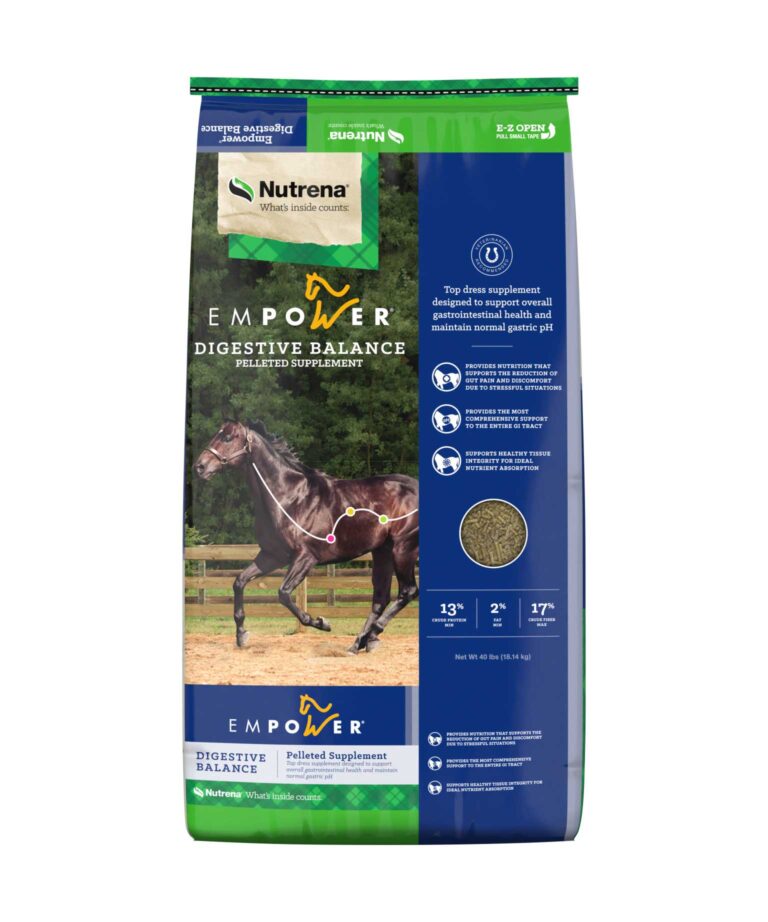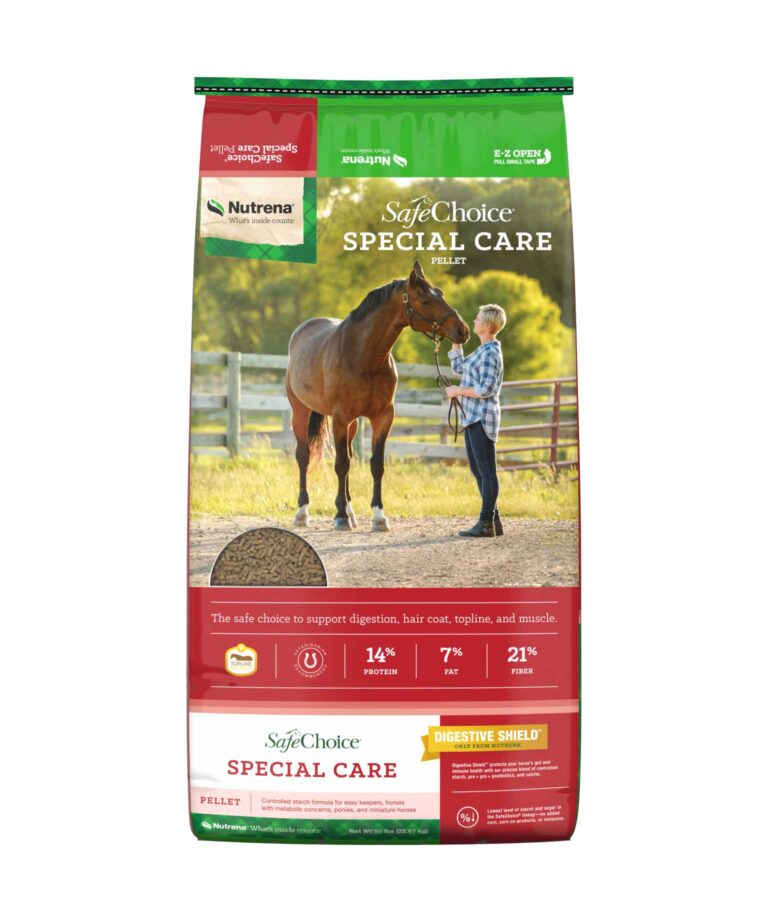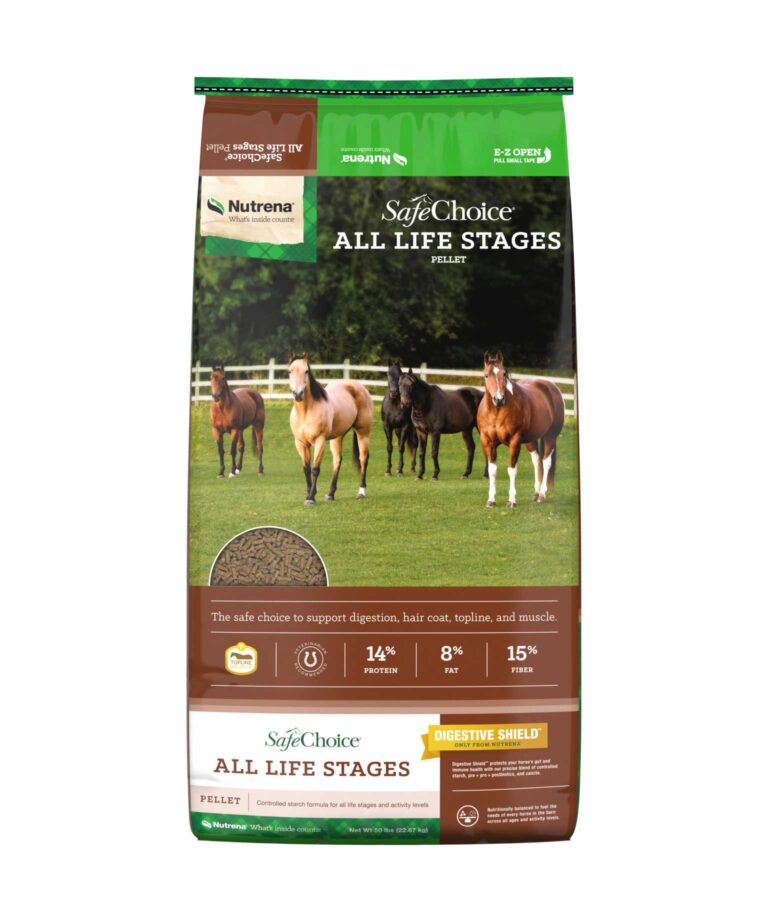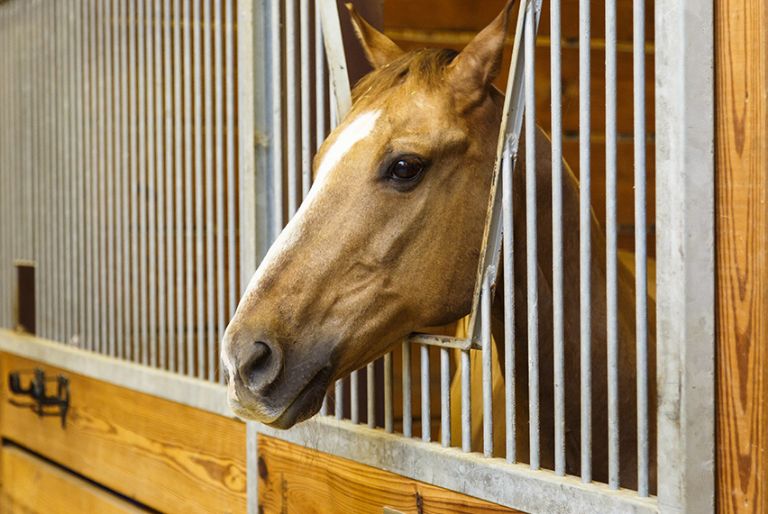Colic, Laminitis & Starch Levels in Horse Diets
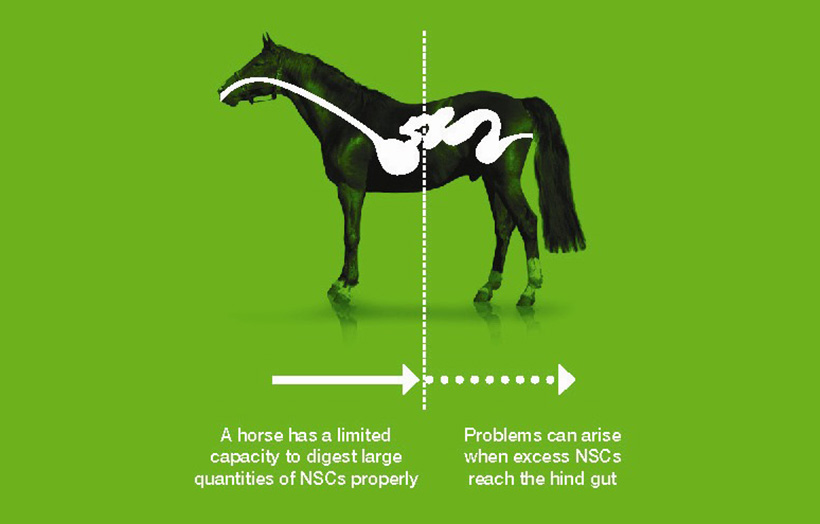
Many horse owners are concerned about carbohydrate levels in their horses diet, particularly if the horse is prone to colic or laminitis. Learn about the relationship between colic, laminitis and starch levels in horse diets.
Looking Beyond Starch Percentage: Total Starch Intake Matters
Often, the owner will look to simply feed a product with a lower starch or NSC percentage. But that’s often not the best, or only, solution, particularly if elevated levels of performance are expected of the horse, because the percent of starch in the feed isn’t what matters to a horse’s digestive system – what truly matters is the total amount of starch that enters the digestive system per meal.
The Impact of Excess NSC on Digestive System and Health
When a horse consumes too much NSC in one meal, the starches and sugars may not be completely broken down and absorbed in the small intestine. Undigested starch getting to the hindgut may cause rapid fermentation by the microbes (gut bugs) that live in the cecum and large intestine, which results in gas production & lactic acid buildup. The gas buildup can result in colic, while the lactic acid accumulation drops the pH of the gut, starting a chain of events that may compromise the blood supply to the hoof, resulting in laminitis.
Balancing NSC Intake for Horses’ Biological Needs
Here’s the catch: all horses need some NSC in the diet to live and work for you – it is a simple biological need. Hard working horses need higher, but still controlled, intakes of starches and sugars to provide readily available energy for work and to replace the glycogen (stored energy) that may have been used up during intense exercise. NSC intake is important for horses to recover from hard work.
Meeting Energy Demands: Importance of Starches and Sugars
If higher total intakes of starch and sugar are required to maintain energy levels, but the potential for digestive upset or laminitic episodes is a primary concern, the horse may benefit from more frequent but smaller meals during periods when extra calories are needed to recover from hard work. The higher daily intake, using more frequent feedings, will provide additional starch and sugar, as well as other nutrients your horse needs, while helping reduce the risk of digestive disturbances related to higher starch intake in a single meal.

